How To Get Rid of Acne on Buttocks
Acne vulgaris is one of the most common skin conditions in the United States and can affect anyone from adolescence into adulthood. Acne breakouts can be frustrating, difficult to manage, and can seriously impact the quality of your life. Whether it’s a tiny pimple or a painful cyst, acne can cause you to feel self-conscious about your appearance. Finding the right treatment option for your acne lesions can be difficult, and waiting too long to tackle a zit can result in permanent scarring. Acne most often affects the face, but it can also impact other areas of the body, including the back, chest, and buttocks. There are many different oral or topical acne treatments, and finding the right one for you can be challenging. Thankfully, Dr. Michele Green in New York City has been treating her patients with the most innovative acne treatments for the past 25 years and has helped them achieve clear, radiant skin wherever the breakout occurs.
Butt acne is one of the most annoying and embarrassing areas to have pimples. Butt acne breakouts are a common issue that many patients face, and a number of factors can exacerbate the condition. These factors include wearing occlusive or tight clothing, excessive heat, hormonal changes, improper exfoliation, sweating, waxing, or even shaving. Though certain bumps on the buttocks may clear up on their own with time, some butt acne breakouts are caused by bacterial or fungal infections, which may need medical treatment in order to resolve. Treating an acne breakout early on is important in order to prevent an infection from spreading and to prevent acne scars from developing, which can be more difficult to treat than the acne breakouts themselves. Dr. Michele Green is a board-certified dermatologist and expert when it comes to treating acne and acne scars. When you are experiencing an acne breakout, whether it is on your buttock, face, chest, or back, Dr. Green is here to help.
Dr. Michele Green is an internationally renowned board-certified cosmetic dermatologist with over two and a half decades of experience, providing some of the most discerning men and women from around the world with the best non-invasive treatment options available for acne and acne scars. In her discreet New York City dermatology boutique, Dr. Green can diagnose the cause of your acne breakout, recommend the best skincare products, and provide effective, efficient acne treatments to clear your acne and butt acne breakouts. The result will be beautiful, clear, healthy-looking skin. Due to her expertise and dedication to her patients, Dr. Green has been consistently voted as one of the best dermatologists in New York by Castle Connolly, New York Magazine, Super Doctors, and The New York Times. When you consult with Dr. Green, she will take the time to assess your medical history and acne breakouts and devise a customized treatment plan to get rid of your butt acne for good.
What causes pimples?
Pimples occur when the sebaceous glands or oil glands become clogged with excess oil, dead skin cells, and even bacteria. This leads to swollen, red lesions filled with pus, known commonly as zits, pimples, and acne. Pimples are most common during puberty as a result of hormonal fluctuations, which can increase serum production and increase the risk of clogged oil glands. Once your hair follicles are clogged, pimples are likely to occur. Other factors that may contribute to pimples include genetics, stress, high humidity, and using oily, greasy, or irritating skin care products.
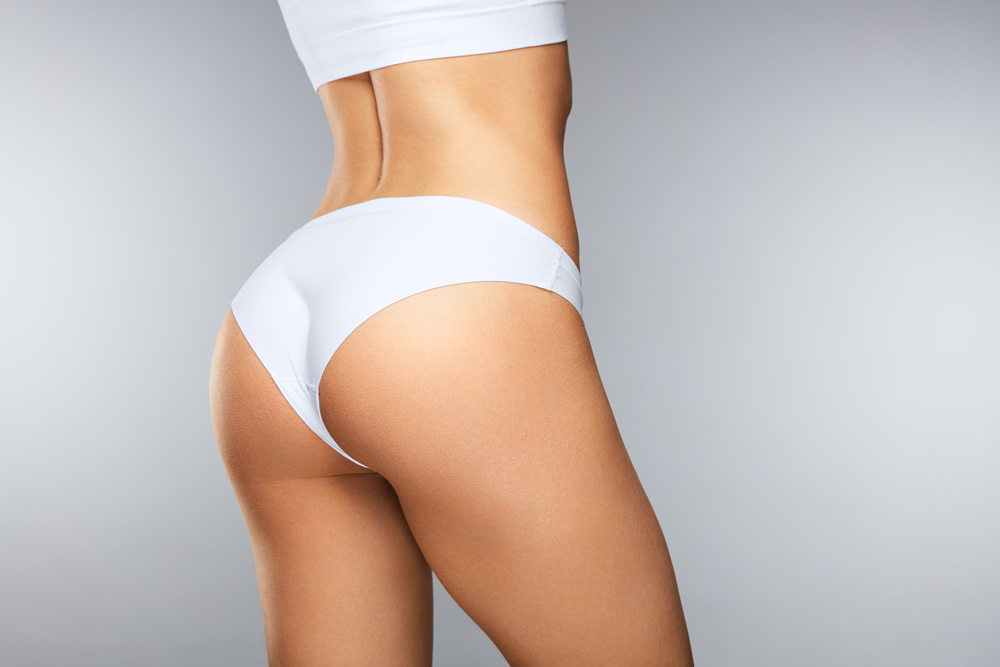
What causes breakouts on the buttocks?
When people think about acne, they generally think about breakouts on the face, chest, and back. Breakouts can also occur on the buttocks, and many patients ask, “Why am I getting acne on my butt?” Acne is one of the most common skin conditions worldwide and occurs when the sebaceous follicles in the skin become clogged with sebum, dirt, debris, and dead skin cells. The debris trapped within the pore causes inflammation of the skin, leading to the development of pimples, pustules, nodules, whiteheads, blackheads, and cysts. Acne can occur anywhere on the body where there are sebaceous follicles. Areas with a higher concentration of sebaceous glands include the face, neck, shoulders, upper arms, back, and chest.
When it comes to butt breakouts, however, other factors might contribute to acne formation. There generally isn’t as much oil production happening on the buttocks as in other areas of the body, meaning that most of the time, those pimples popping up on the butt may be related to a different form of skin irritation than traditional acne. Often, acne on the buttocks is not considered to be true acne and may be a sign of other skin conditions, including folliculitis, carbuncles, keratosis pilaris, or dermatitis.
Folliculitis
Folliculitis looks nearly the same clinically as traditional acne, although the root of the issue is at the hair follicle, not the sebaceous glands. Folliculitis occurs when there is irritation of the hair follicles of the skin, creating bumps that closely resemble acne lesions. Folliculitis, however, is most commonly onset by repeated friction in an area. It can also be triggered by tight clothing, a sedentary lifestyle, failing to shower after exercising, improper shaving or waxing techniques, ingrown hairs, and even sitting in a hot tub. Folliculitis can also occur when a hair follicle is infected with the bacteria Staphylococcus aureus, also known as staph bacteria, or other forms of bacteria, fungi, or yeast.
Carbuncles
A carbuncle is a painful cluster of boils that many describe as a pus-filled knot under the skin. They form when folliculitis goes untreated and bacteria infect the inflamed hair follicles. Though a carbuncle may feel similar to a cystic acne lesion, cystic acne is the result of a buildup of sebum and debris within a clogged pore. In contrast, carbuncles occur when breakouts of folliculitis are left untreated and worsen with infection. Since folliculitis has the potential to develop into this deeper, more painful skin infection, it should always be promptly treated by an experienced, board-certified dermatologist, such as Dr. Michele Green.
Keratosis Pilaris
If you’re observing that there are small red bumps on the buttocks that are neither itchy nor painful, you may be experiencing a skin condition called keratosis pilaris (KP). Keratosis Pilaris is a generally harmless skin condition that occurs when the body’s natural keratin production interferes with the follicular opening. The underlying cause of keratosis pilaris is currently unknown, although it does appear to be genetic, typically running in families. If you do have keratosis pilaris on the buttocks, you’ll likely see it elsewhere on the body, such as the arms or legs.
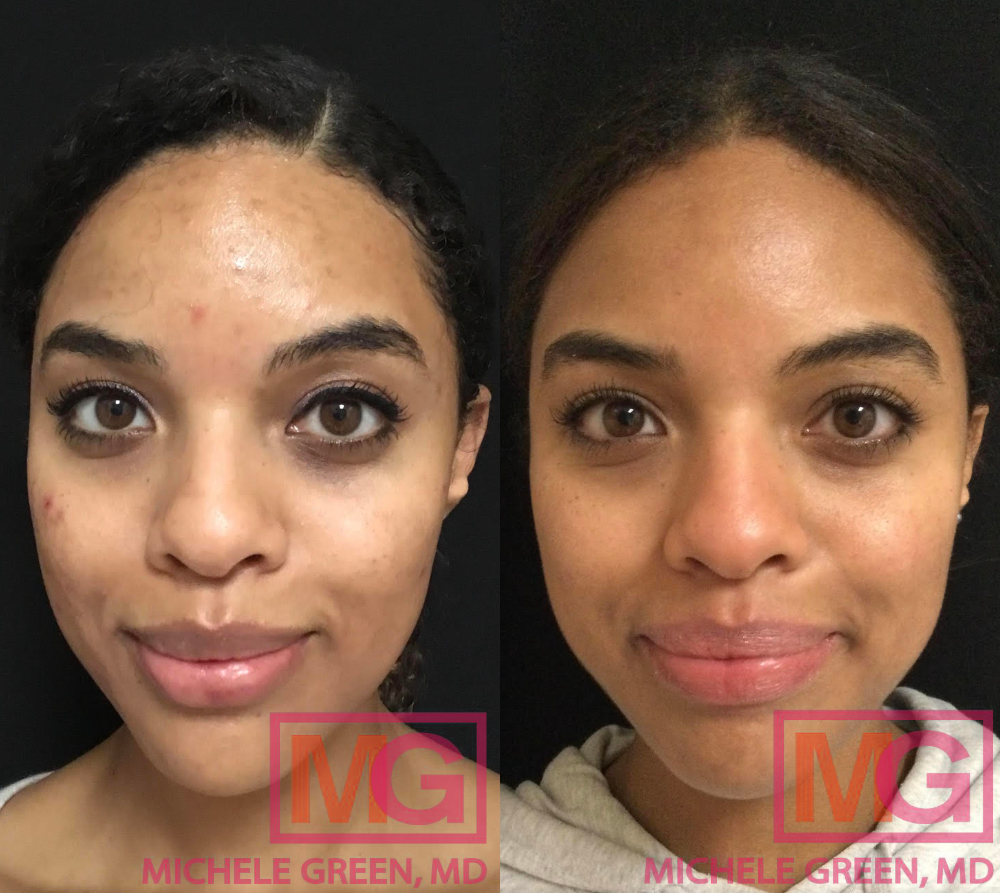
5 months before and after Accutane
Dermatitis
Dermatitis is the general term for any condition that causes irritated or inflamed skin. The most common form of dermatitis is atopic dermatitis, also known as eczema. Eczema is a chronic skin condition characterized by dry, itchy patches of skin. The rash can be red, purple, or brown and can appear as bumpy, flaky, or scaly. While the exact cause of eczema is unknown, it is believed to be a result of an impairment in the skin’s natural moisture barrier. Contact dermatitis is a form of eczema that occurs when the skin is physically exposed to an irritant or allergen, such as certain detergents, soaps, cleansers, fragrances, or preservatives. Contact dermatitis can look like a red, inflamed rash on the skin that can be bumpy, itchy, oozing, flaky, or painful.
How to get rid of acne on the buttocks?
Breakouts on the buttocks can be incredibly frustrating and irritating. While acne can develop on the buttocks, other skin conditions, including folliculitis, carbuncles, and keratosis pilaris, may also be the source of the breakout. Understanding the cause and type of breakout you are experiencing is crucial to getting proper treatment. Additionally, these skin conditions typically do not resolve on their own, and delaying treatment can potentially result in permanent scarring. If you are experiencing any type of breakout on your buttocks, the first step in treatment is to consult with a board-certified dermatologist like Dr. Green for assessment. Dr. Green will assess the area and may order additional bloodwork or cultures to determine whether any antibacterial or anti-fungal medications are necessary for treatment. Afterward, she will provide you with a treatment plan with a combination of targeted skincare products, topical or oral medications, and in-office treatments to help clear your breakouts and achieve clear, radiant skin.
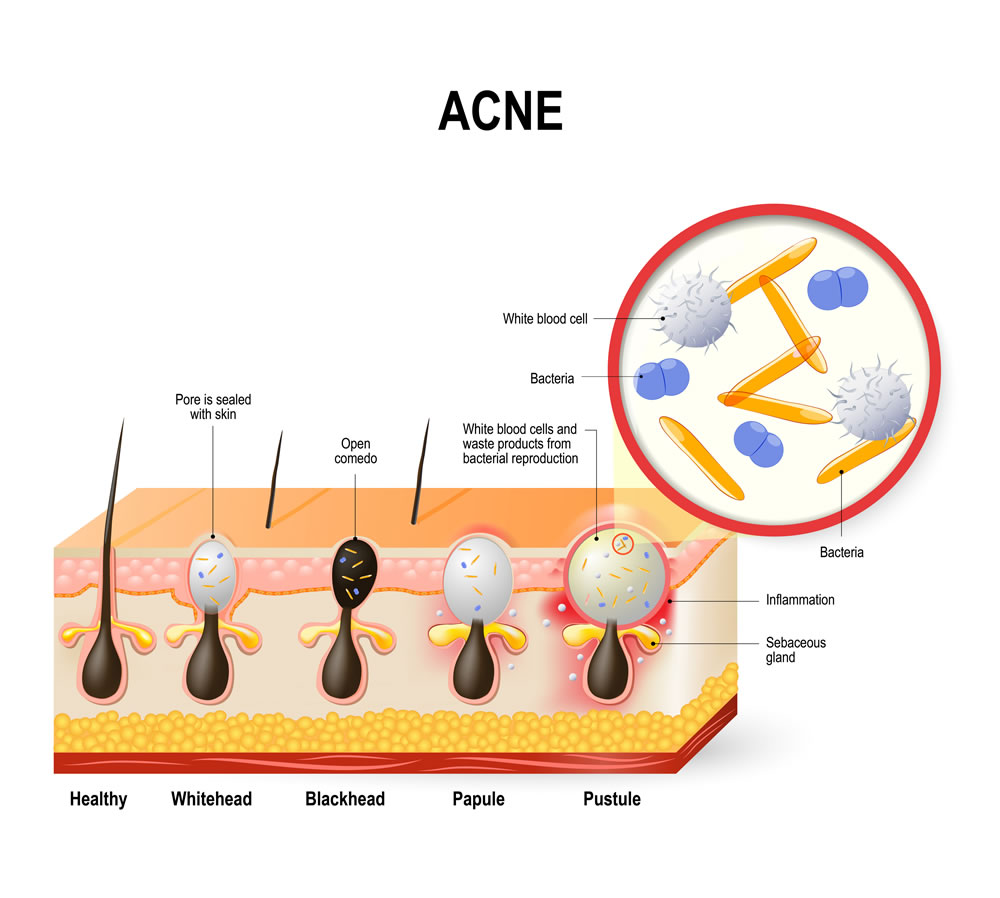
Skincare ingredients for butt acne
When it comes to treating butt acne, it is important to have a skincare routine with ingredients and products that will help you reduce breakouts. Using a cleanser morning and evening is best to reduce dead skin cells, dirt, and excess oil that can become trapped in hair follicles or sebaceous glands. Using a moisturizer is important to nourish and hydrate the skin, as dry skin can exacerbate breakouts and result in further irritation. When choosing a moisturizer, it is important to look for products labeled as non-comedogenic — these moisturizers are proven to relieve dryness without clogging pores. The best products for butt acne will include active ingredients that can effectively treat the breakouts, including:
- Alpha hydroxy acids (AHAs) — Alpha hydroxy acids work to unclog pores and cleanse the skin gently. Common AHAs used for acne breakouts, folliculitis, and KP include glycolic acid and lactic acid.
- Salicylic acid —Salicylic acid is a beta hydroxy acid (BHA) that gently exfoliates the skin, breaking down oil and removing dead skin cells from clogged pores. It is a common active ingredient in many skincare products, including cleansers, serums, and exfoliating scrubs. Salicylic acid can also help treat folliculitis and Keratosis Pilaris (KP).
- Benzoyl peroxide — Benzoyl peroxide works by reducing and eliminating the amount of acne-causing bacteria on the skin. It also helps to unclog pores by removing dead skin cells and excess sebum. When used to target active acne, benzoyl peroxide has a drying effect on any bacteria within pustules, which makes it easier to wash away excess oils trapped inside the pimples. It is great for preventing acne from occurring and ensuring active breakouts do not get infected, further inflamed, and irritated.
Dr. Michele Green, a globally recognized board-certified dermatologist, has crafted a range of topical skincare products, MGSKINLABs Inc., that are highly effective against acne blemishes. The Acne Kit from MGSKINLABs, a three-step system, is designed to clear the skin of acne lesions. The Pore Minimizing cleanser, infused with alpha hydroxy acids (AHAs), is ideal for clearing acne. These active ingredients gently exfoliate and dissolve excess oil, effectively treating acne. The Retexturizing Pads, containing glycolic and salicylic acid, exfoliate away dead skin cells and prevent pore blockage, stopping acne from forming. Lastly, the Acne Spot Treatment, formulated with benzoyl peroxide, can be applied to any active acne lesion to kill acne-causing bacteria and unclog pores. Many patients also choose to supplement their medical treatments with home remedies to reduce the appearance of pimples on the buttocks. One popular home remedy is tea tree oil, which has natural antimicrobial properties. However, as tea tree oil can be irritating to the skin, it is best to try a test spot to ensure that no reaction occurs.
Topical or oral antibiotics for breakouts on the buttocks
Someone who is struggling with butt acne may also benefit from using traditional topical antibiotics, especially if there are any signs of infection. Topical antibiotics can also benefit folliculitis, which commonly occurs when staph bacteria get trapped in the hair follicles. Common topical antibiotics include Clindamycin or Erythromycin lotion. Combination topical antibiotics and benzoyl peroxide gels, such as Benzaclin or Benzamycin, are also very effective. When there is a deeper infection or a breakout that may be hard to reach with a topical antibiotic (the buttocks and back), oral antibiotics such as Doxycycline or Minocycline may be prescribed. These medications are often prescribed for a short course of one to two weeks to clear acne flares.
Topical treatments for dermatitis
When treating atopic or contact dermatitis, the American Academy of Dermatology recommends the use of topical corticosteroids. Corticosteroids work to reduce inflammation and itching on the skin. Topical corticosteroids should be used with a rich moisturizer to keep the skin hydrated and reduce further exacerbation of symptoms. If topical steroids do not improve symptoms, topical calcineurin inhibitors like pimecrolimus and tacrolimus may be prescribed to suppress the immune system and decrease inflammation.
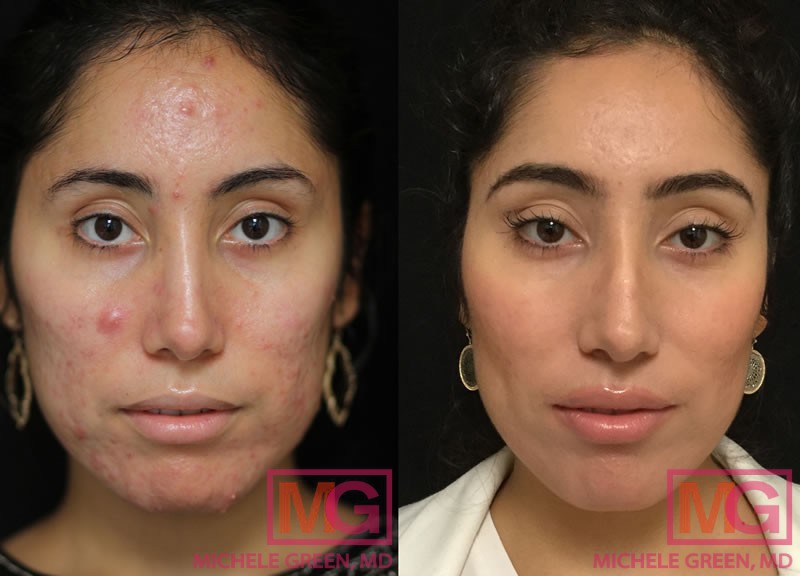
3 months before and after Accutane
Acne surgery
Acne surgery is a traditional approach to removing deeper types of acne breakouts on the skin. This in-office treatment involves opening the pores and extracting the dead skin cells, debris, excess oils, and other impurities trapped inside. After all impurities have been removed, the pores are injected with an intralesional corticosteroid to accelerate healing. Acne surgery is an excellent treatment option for preventing the formation of acne scarring from deep acne lesions. Acne surgery can be performed to treat acne on many areas of the body, including butt acne, facial acne, and back acne.
How to get rid of butt acne fast
Butt acne can be incredibly frustrating to experience, and many patients want to know the quickest way to get rid of their breakouts. The fastest way to treat any type of breakout on the buttocks is to consult with a board-certified dermatologist for a proper diagnosis. While acne can occur on the buttocks, many other skin conditions can create red pumps that appear similar to acne lesions, and utilizing the correct products and medications is crucial for effective treatment. When you consult with Dr. Green in her private NYC dermatology office, she will assess the breakout and may order additional labwork to determine the exact cause. She will then work with you to create an individualized treatment plan containing a combination of skincare products, medications, and in-office treatments to help you achieve beautiful, clear skin.
How to get rid of butt acne scars
Once breakouts have been treated and properly managed, Dr. Green can recommend treatments to get rid of any scarring left behind. Scarring can appear in the form of red marks, uneven texture, or pigmented lesions, and choosing the correct treatment for your specific scars and skin tone is essential for the best results. Some of the most common non-invasive treatment options utilized by Dr. Green to treat acne scars include the VBeam laser, resurfacing lasers like Fraxel and eMatrix, and chemical peels. During your consultation with Dr. Green, you will have the opportunity to discuss your specific skin concerns and aesthetic goals with her in-depth and learn more about which combination of treatment options is best suited to treat your skin condition.
VBeam laser treatment for redness
The VBeam laser is considered to be the gold standard treatment for addressing any form of facial or bodily redness or residual red marks that are left behind after an acne breakout. The VBeam operates on a wavelength (595 nanometers) that specifically targets skin cells that are holding onto red pigment. The energy from the laser is absorbed by those skin cells exclusively, causing the redness to be destroyed while all surrounding skin is left untouched. One of the greatest perks associated with the Vbeam treatment is that there is a built-in Dynamic Cooling Device that cools the skin before the laser beam is emitted, making the procedure itself even more comfortable for the patient. Additionally, there is no downtime involved with a Vbeam treatment, meaning that one can resume normal activities directly after the procedure. Patients often need a series of treatments spaced one month apart to see the best results. When it comes to tackling any signs of redness in the skin, including that which is associated with butt acne and folliculitis, the VBeam laser is ideal.
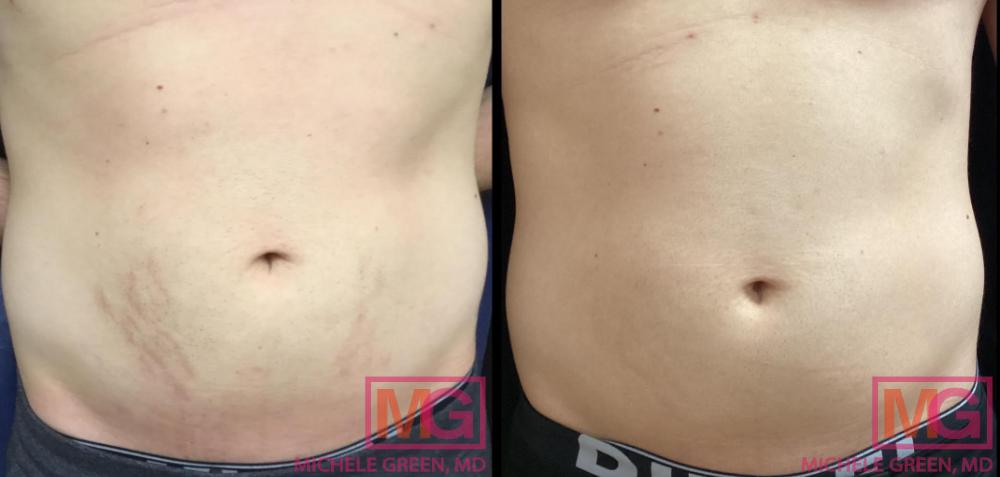
Before and after 4 sessions of VBeam
eMatrix Laser to treat acne scars
The eMatrix laser is a resurfacing laser that utilizes fractionated bi-polar frequency to penetrate beneath the skin’s surface, maximizing the amount of collagen and elastin produced in the skin. Stimulating the skin’s production of collagen and elastin improves textural irregularities and treats acne scars and stretch marks. The eMatrix laser can treat textural issues in patients with any skin type and tone, even patients with darker skin tones, making it a powerful tool to combat stubborn acne scars. Using this laser treatment helps patients with acne scars achieve smoother, brighter, tighter, more beautiful, younger-looking skin. Since the eMatrix sublative rejuvenation has only 48 hours of downtime, this laser treatment can easily be scheduled. Typically, patients undergo a series of three to five treatment sessions spaced one month apart.
Fraxel laser treatment for hyperpigmentation
The Fraxel laser is a cutting-edge laser treatment that is often referred to as the “magic eraser” for its unique ability to address an incredibly wide range of skin concerns, including unwanted scarring associated with old breakouts. The Fraxel laser contains two wavelength settings: a 1550nm setting to treat acne scars, uneven skin texture, fine lines, wrinkles, and pore size, and a 1927nm setting to reduce sun damage and pigmentation. The laser employs highly concentrated, controlled laser pulses to the skin, creating thousands of microscopic wounds in the dermis to trigger the body’s natural wound-healing process and stimulate collagen production. Fraxel works via a fractionated laser technology, meaning it precisely treats just a fraction of the skin at a time while leaving the surrounding skin unaffected. This feature helps to minimize the amount of downtime required, with patients typically experiencing mild redness for 48 hours post-treatment. After two to three treatment sessions spaced one month apart, patients can look forward to a reduction in the appearance of their acne scars and a more smooth, even skin texture.
How to get rid of dark spots from butt acne breakouts
Butt acne can be a pain, and it can be even more frustrating when butt pimples leave behind dark spots. These little dark marks are associated with a skin condition called post-inflammatory hyperpigmentation (PIH). They can occur after an outbreak of acne, folliculitis, or other inflammatory injury or skin irritation. Dark spots typically develop when inflammation and skin irritation associated with acne lesions trigger the overproduction of melanin in a cluster of surrounding cells. Sometimes, the appearance of dark spots on the skin may resolve independently, though this can take a considerable amount of time. Other dark marks may require professional treatment to make them disappear completely. In any case, meeting with a board-certified dermatologist like Dr. Green is the best way to effectively and swiftly minimize the appearance of dark marks on the buttocks left by acne breakouts or folliculitis. For her patients who are struggling with the PIH, Dr. Green typically recommends a unique combination of effective in-office treatments and specially formulated skincare products to produce a brighter, more even-toned complexion.
Mesopeels for hyperpigmentation on the buttocks
A Mesopeel is a specially formulated chemical peel designed to gently remove hyperpigmentation from the skin. Mesopeels work through chemical exfoliation, removing dead pigmented skin cells to reveal healthy, bright cells underneath. Mesopeels are also able to control melanocyte activity to reduce the production of melanin. This gentle chemical peel is safe and effective for use on many sensitive areas of the body, including the buttocks, axilla, and groin. Additionally, Mesopeels are safe to use on all skin tones, including darker skin tones. Often, a series of treatment sessions spaced three to four weeks apart is necessary for optimal results. There is no downtime with treatment, making it an excellent option for reducing hyperpigmentation from butt acne.
Skincare ingredients for reducing post-inflammatory hyperpigmentation
Utilizing the proper skincare products is crucial to eliminating dark spots and post-inflammatory hyperpigmentation from the buttocks. Hydroquinone works to lighten areas of hyperpigmentation by blocking an enzyme crucial for the production of melanin. Hydroquinone comes in various strengths and can only be obtained by a prescription from a board-certified dermatologist. Retinol and retinoids are also commonly used to treat PIH. Retinol and retinoids are derived from vitamin A and work to increase the rate of skin cell turnover and exfoliate discolored cells from the skin’s surface. Retinols can be found over the counter in various lotions and creams, while retinoids can be obtained through prescription. Some prescription retinoid creams can also be compounded with hydroquinone to help treat difficult, stubborn pigmentation. When using any retinol, retinoid, or hydroquinone product, it is essential to avoid sun exposure, as these products photosensitize the skin. One of the most popular over-the-counter ingredients for reducing hyperpigmentation is vitamin C, which promotes skin cell renewal and even skin tone. Dr. Green’s MGSKINLAB skincare line carries a potent Vita-C- Serum to help patients eliminate the appearance of dark spots. Other powerful ingredients for reducing PIH include tranexamic acid, azelaic acid, and kojic acid.
How to prevent butt acne
Many different lifestyle changes can be made to prevent butt acne, folliculitis, and other skin conditions from developing on the skin. Changing the types of clothing worn can be very helpful in reducing the formation of acne, folliculitis, and dermatitis. While leggings are often the perfect pair of comfortable pants for working out or running errands, the tight-fitting fabric can cause friction against the skin, leading to irritation. When sweat and friction combine, the environment is right for developing skin conditions like folliculitis and butt acne. To best prevent acne breakouts and folliculitis from forming on the buttocks, opt for clothing that is loose-fitting and breathable as opposed to tight-fitting clothing that traps sweat and debris against the skin. Clothes made from cotton are generally more breathable than other fabrics and are a good choice for those looking to prevent buttne. Wash clothes, towels, and sheets regularly, as bacteria can be transferred to your skin as well.
Also, please be sure to shower regularly, especially after a workout session. Allowing sweat, dirt, and bacteria to stay on your skin after exercising is a recipe for developing breakouts and body acne. When rinsing off the sweat, patients can see additional benefits by routinely using a gentle exfoliating lotion or body wash. Skincare products containing ingredients like alpha hydroxy acids can help prevent and combat any flare-ups of acne on the buttocks. Using a loofah in the shower can also help to remove the buildup of dead skin cells and debris that may be clogging the pores and contributing to butt acne. However, be careful to avoid over-exfoliating, which can actually exacerbate skin irritation and lead to worsening butt acne breakouts. When in doubt, schedule a consultation with a skincare and butt acne breakout expert, such as internationally renowned board-certified dermatologist Dr. Michele Green in NYC. Dr. Green will work with you to customize your butt acne treatment plan so that it is perfectly catered to your unique needs and goals.
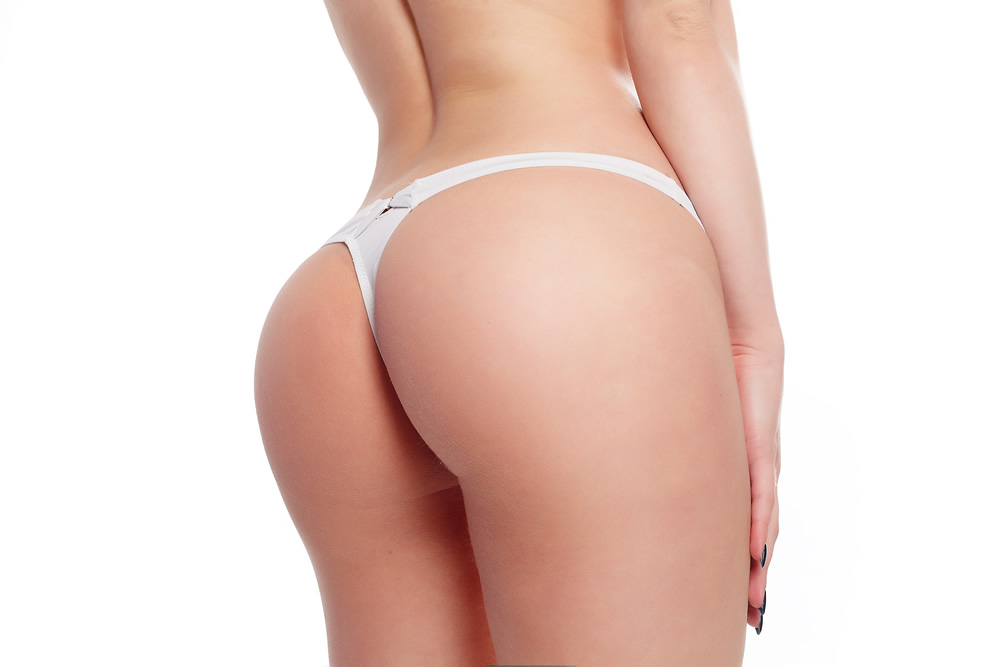
Frequently asked questions (FAQs) about Butt Acne
Is butt acne normal?
Acne is an incredibly common skin condition that develops when the oil glands at the base of hair follicles produce excess sebum that, together with dead skin cells, acne-causing bacteria, and debris, clog the skin’s pores and lead to inflammation and irritation. Acne can develop anywhere in the body where there are sebaceous glands, including the face, chest, back, and buttocks. However, most cases of butt acne are not considered to be true acne breakouts, despite the appearance of inflamed, irritated, red bumps that look very similar to pimples. Instead, these breakouts are often actually related to a skin condition called folliculitis, in which there is inflammation and irritation of the hair follicles in the affected areas. Common causes of butt acne include wearing tight-fitting clothing, a sedentary lifestyle, failing to shower after exercising, improper shaving or waxing techniques, and even sitting in a hot tub. Folliculitis and butt acne are normal and treatable skin conditions that can be quickly and effectively resolved with the help of an expert, such as board-certified dermatologist Dr. Michele Green in NYC.
What causes pimples on the buttocks?
Pimples that occur on the buttocks are often not true pimples or acne. Although these inflamed, raised red bumps may look like acne, they are often associated with a skin condition known as folliculitis. Folliculitis is the result of infection and inflammation of hair follicles rather than the pores, which are clogged in traditional acne. That results in a breakout of red bumps that look like pimples and may be itchy. Typically, folliculitis occurs when a hair follicle is infected with the bacteria Staphylococcus aureus, also known as staph bacteria. Folliculitis may also be caused by other forms of bacteria, fungi, or yeast, as well as simple irritation or clogging of the hair follicles. This irritation of the hair follicles is often caused by friction between tight-fitting clothing and skin, which can aggravate the epidermis (the outer layer of the skin). Folliculitis looks nearly the same clinically as traditional acne. However, the hair follicle is at the root of the irritation and not a buildup of excess sebum in the oil gland. In some cases, the appearance of red pimples on the buttocks can be due to keratosis pilaris, where keratin production interferes with the natural opening of follicles. Certain types of dermatitis, such as contact dermatitis and eczema, can also create the appearance of pimples on the buttocks.
What STD is acne on the buttocks?
Acne on the buttocks is not a sexually transmitted disease (STD). However, some STDs can cause acne-like lesions. For instance, genital herpes can lead to blisters on or around the buttocks. These blisters typically appear in clusters and may be itchy or tingly. Over time, the blisters will scab over and heal, indicating the end of the outbreak. Herpes can flare up intermittently throughout your life after the initial infection. If you suspect that your butt acne may actually be an STD, it’s important to consult with a board-certified dermatologist. STDs are highly contagious and require prompt treatment to prevent further transmission. Dr. Michele Green can assess the affected area and create a tailored treatment plan for your butt acne to help you achieve clear, healthy skin.
Why do I have red bumps on my buttocks but not pimples?
Acne on the buttocks can come in various forms, and often butt acne can be confused with folliculitis. Folliculitis is inflammation of the hair follicle, which can also become infected with bacteria. Often, the inflammation appears as red bumps that do not have a pus-filled tip. Certain activities can increase the likelihood of developing folliculitis, including shaving often, not cleaning the area effectively after sweating, and going into a hot tub or sauna that is not cleaned properly. Red bumps can also be a sign of dermatitis, whether from contact with an irritant or allergen or from a flareup of preexisting eczema. For proper diagnosis of your red bumps, it is essential to consult with a board-certified dermatologist like Dr. Green as soon as they occur.
What helps with butt acne?
There are many possible solutions when it comes to treating butt acne and achieving clearer skin, and it can be overwhelming to navigate all of the treatment options. Additionally, with multiple conditions that can look like pimples, navigating the most effective treatment option can be even more difficult. This is why it is important to be evaluated by an experienced, board-certified dermatologist, such as Dr. Green. When you have your initial consultation with Dr. Green, she will examine the treatment area and your skin condition and discuss your medical history and history of acne breakouts. Then, Dr. Green will make a recommendation about which treatments or series of treatments will work best to address your unique needs. Often, a combination of targeted skincare products, topical or oral medications, in-office treatments, and lifestyle changes can help to manage and eliminate butt acne for good.
How to avoid butt acne
Some of the easiest ways to prevent breakouts of butt acne or folliculitis include making a few easy lifestyle changes that will improve your skin health. Patients who want to stop acne breakouts before they appear should avoid tight clothing, shower regularly with an anti-bacterial soap (especially after exercising), and use a body wash or cleanser that contains acne-fighting active ingredients such as benzoyl peroxide or salicylic acid. Tight-fitting clothing, while trendy, can trap acne-causing bacteria and sweat, increasing the risk of developing a butt acne breakout. Additionally, when dealing with a breakout of butt acne, many patients may want to scrub the area intensely with a harsh exfoliating tool like a loofah; however, this can actually be damaging to the affected area and exacerbate any butt acne breakouts. It’s best to use gentle chemical exfoliants and nourishing, non-comedogenic lotions to keep the skin properly cleansed and hydrated. If persistent butt acne breakouts have been unresponsive to over-the-counter treatments and proper self-care practices, schedule a consultation with board-certified dermatologist Dr. Michele Green in New York.
How to clear up butt acne
Butt acne and folliculitis breakouts can be frustrating to treat and, for many, cause feelings of low self-esteem and self-consciousness. Treating butt acne with a board-certified dermatologist is critical to preventing acne scarring, which is often even more challenging to treat than the initial breakouts. If you find yourself struggling with the presence of butt acne, there are plenty of prevention methods and treatment options available that can help. Rather than go through the agony of trial and error with over-the-counter skin care products that aren’t guaranteed to work, schedule a consultation with an acne expert like Dr. Michele Green in NYC, who can help you understand and manage your breakouts and achieve clear, acne-free skin.
Dr. Michele Green in NYC is an internationally renowned board-certified dermatologist with over two and a half decades of experience providing her patients from around the world with the best non-invasive treatment options available, including for acne breakouts and acne scars. Castle Connolly, New York Magazine, and Super Doctors consistently identify Dr. Green as one of NYC’s best dermatologists for her dedication to her patients and expertise. When you consult with Dr. Green, she will work with you to create a completely customized treatment plan that incorporates the in-office procedures and specially formulated skincare products best suited to your skin concerns and goals. If you are struggling with butt acne, acne scars, hyperpigmentation, or another dermatological issue, Dr. Green is here to help you achieve blemish-free, healthy skin. Please schedule a consultation with Dr. Green by contacting us online today or calling the office at 212-535-3088.
 212-535-3088
212-535-3088